There are approximately 11,000 species of birds in the world, and they live in a wide variety of habitats. However, a large number of them inhabit areas around water, and one of the the unique adaptations that makes them so well suited to their habitat is webbed feet. Webbed feet are feet which have a membrane across the interdigital spaces, something that can help with swimming capabilities due to the larger surface area. But which birds have this characteristic? Read on to learn about the birds with webbed feet!
1. Avocets
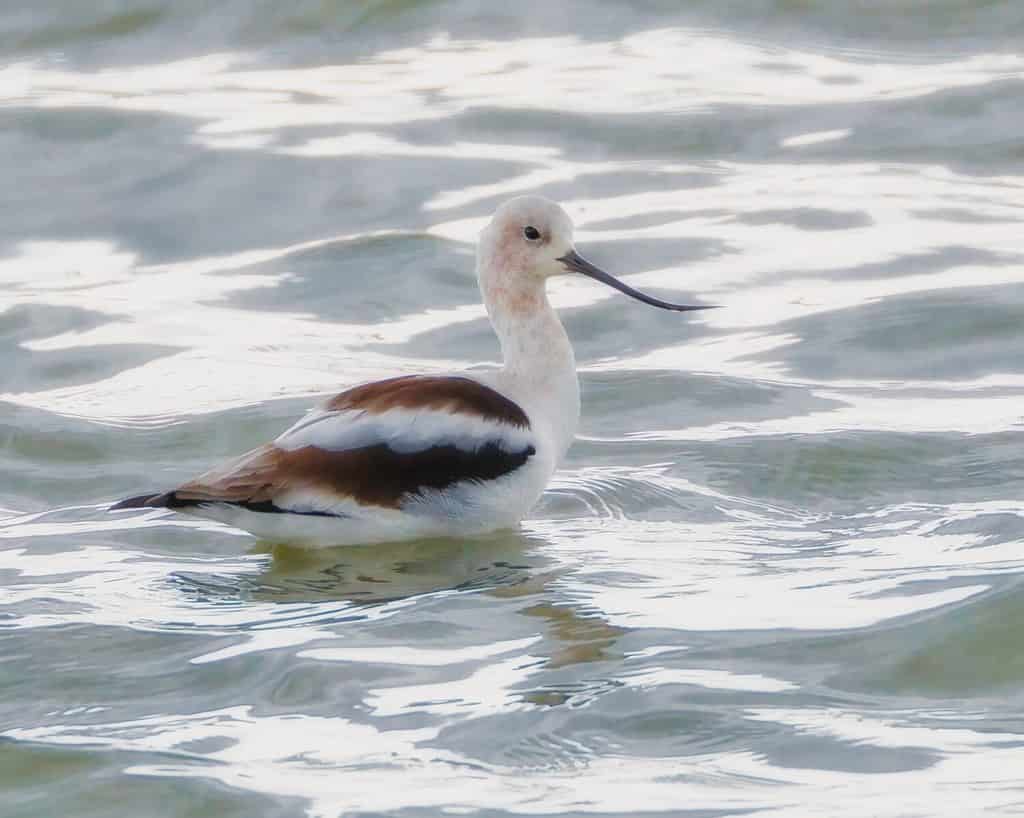
Avocets are wading birds with webbed feet.
©J. S. Fisher/Shutterstock.com
There are four species of avocets, and they are members of the Recurvirostra genus. Avocets have distinctive upcurved bills and long legs. They are wading birds and live close to shallow areas of water, such as marshes, beaches, ponds, and mudflats. Avocets live across North and South America, Australia, Asia, and parts of Europe.
2. Albatrosses

Albatrosses are some of the largest seabirds in the world.
©Don Mammoser/Shutterstock.com
Some of the largest seabirds on the list are albatrosses, which have a wingspan of up to 11 feet. There are 22 species of albatross, and most of them are classified as being endangered on some level. As pelagic birds, albatrosses spend the majority of their lives out at sea, only coming back to land during the breeding season. Albatrosses have large webbed feet which enable them to be powerful swimmers, although they are clumsy when on land.
3. Auklets

Auklets have three webbed toes.
©Sabine’s Sunbird / CC BY-SA 3.0 – License
There are six species of auklet in the world and they all have palmate feet. This means that three of their toes are fully webbed. Auklets are typically black and white and have short wings and short tails. However, they are extremely good swimmers and are even capable of swimming underwater due to their powerful feet and compact, streamlined bodies.
4. Boobies

Boobies have large webbed feet which help them to dive underwater.
©iStock.com/nok6716
The next birds are those in the genus Sula and are known as boobies. There are six species, including the blue-footed booby, which is easily distinguished by its blue feet. Boobies have fully webbed feet and are excellent swimmers. They are seabirds and are capable of diving and searching for prey underwater.
5. Cormorants

There are around 40 species of cormorant.
©Kumud Parajuli/iStock via Getty Images
The cormorant is another bird with fully webbed feet used to propel itself through the water when diving for food. There are approximately 40 species of these birds, and they are fairly widespread around the world. Although most species are associated with coastlines, some can be found close to water in inshore regions.
6. Ducks

Ducks are some of the most common birds with webbed feet.
©Paul Reeves Photography/Shutterstock.com
The next birds on the list are ducks, which inhabit every continent except Antarctica. There are many species of duck, although one of the most common is the mallard. Ducks are commonly kept ornamentally and for the table, but when in the wild they typically live close to bodies of water such as lakes, rivers, and ponds.
7. Finfoots
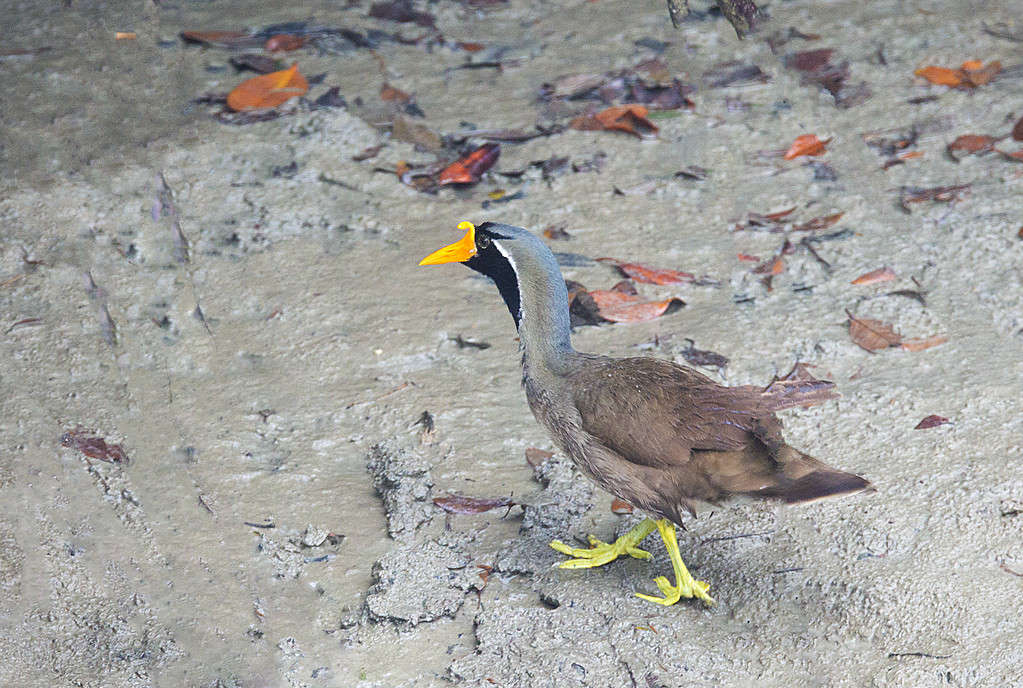
Finfoots have thick-lobed toes rather than fully webbed feet.
©Touhid biplob, CC BY-SA 4.0, via Wikimedia Commons – License
Named for their unusual feet, finfoot birds don’t have webbed feet in the typical sense. Instead, they have large, lobed toes that have thick lobes of skin which aid them while swimming. However, these birds are still extremely agile while on land too. Finfoots live in a variety of wetland habitats, although only in areas where there is plenty of cover as they are particularly shy and secretive birds. There are three species of finfoots — the African finfoot which is native to Africa, the masked finfoot in Asia, and the sungrebe in both Central and South America.
8. Flamingos
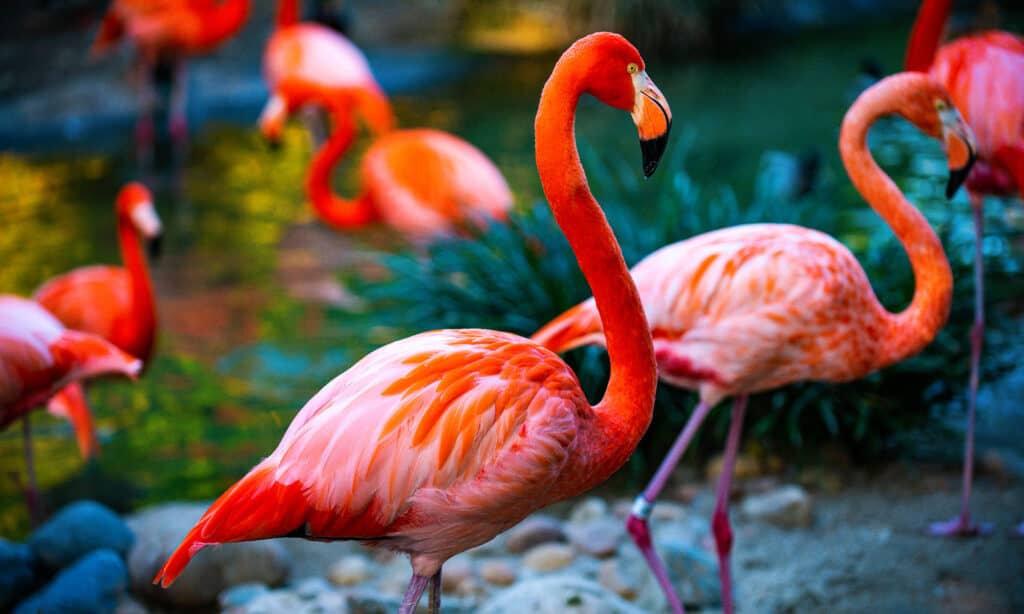
Their bright pink appearance makes flamingos some of the most recognizable birds.
©Volodymyr TVERDOKHLIB/Shutterstock.com
Flamingos are another wading bird with webbed feet. There are six species of flamingo, and the largest is the greater flamingo, which stands up to 59 inches high. Flamingos are characterized by their pink appearance, which comes from the pigments in the shrimp and algae that they eat. Flamingos typically inhabit areas around shallow lakes and lagoons but often live in large colonies.
9. Fulmars
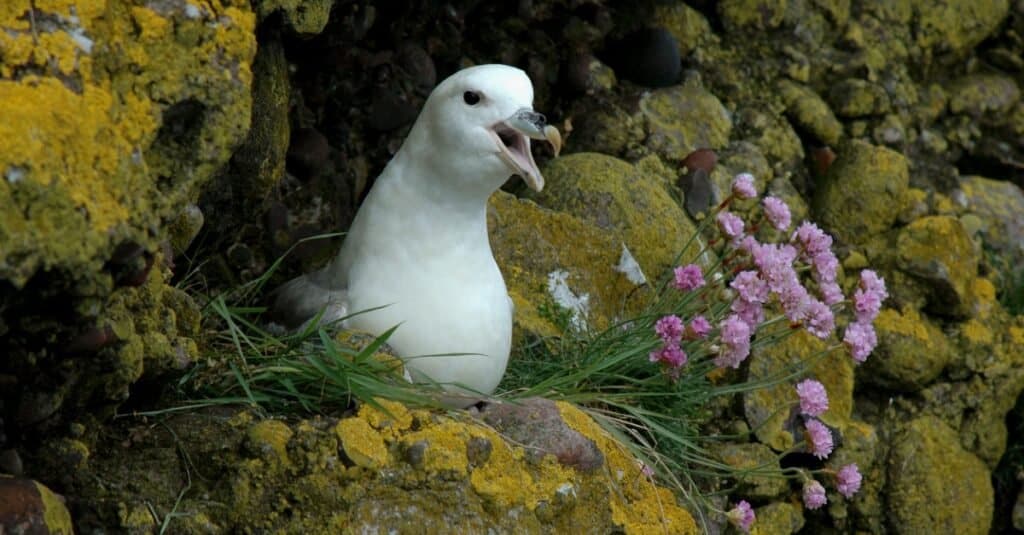
Fulmar only returns to land to nest.
©iStock.com/Michel VIARD
Another bird with webbed feet is the fulmar. There are two species — northern and southern fulmars — which are both pelagic. They spend the majority of their lives at sea but come ashore during the breeding season to nest on cliffs around the coast.
10. Frigatebirds

Frigatebirds have a highly distinctive appearance.
©iStock.com/ksumano
Some of the most distinctive birds are frigatebirds, which can be distinguished by their black plumage and the bright red throat patch on the males. There are five species of frigatebirds, and all have webbed feet. However, their feet are small and not particularly powerful, which is one of the reasons that they don’t often land on the water or swim.
11. Gannets
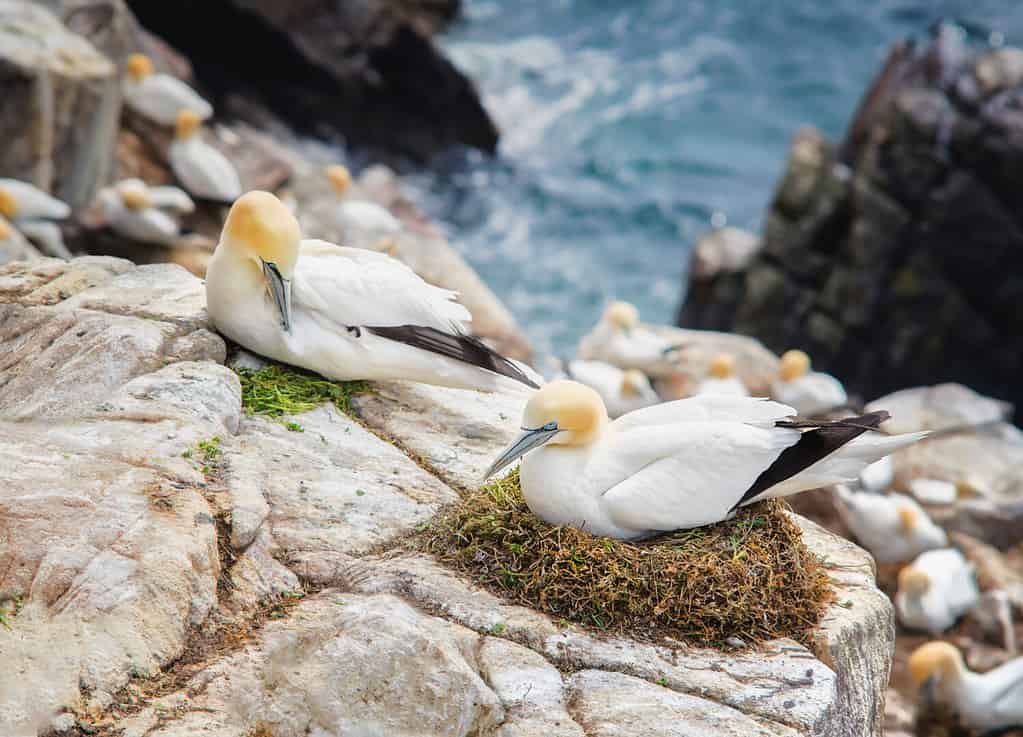
Gannets have distinctive yellowish-colored heads.
©Algirdas Gelazius/Shutterstock.com
There are three species of gannets, and they all have white plumage with yellowish-colored heads and black tips on their wings. Like several of the other seabirds on the list, gannets spend the majority of their lives at sea and are well adapted for swimming after prey due to their powerful, webbed feet. However, gannets do come ashore to breed and typically nest on small islands or around the coastline.
12. Geese
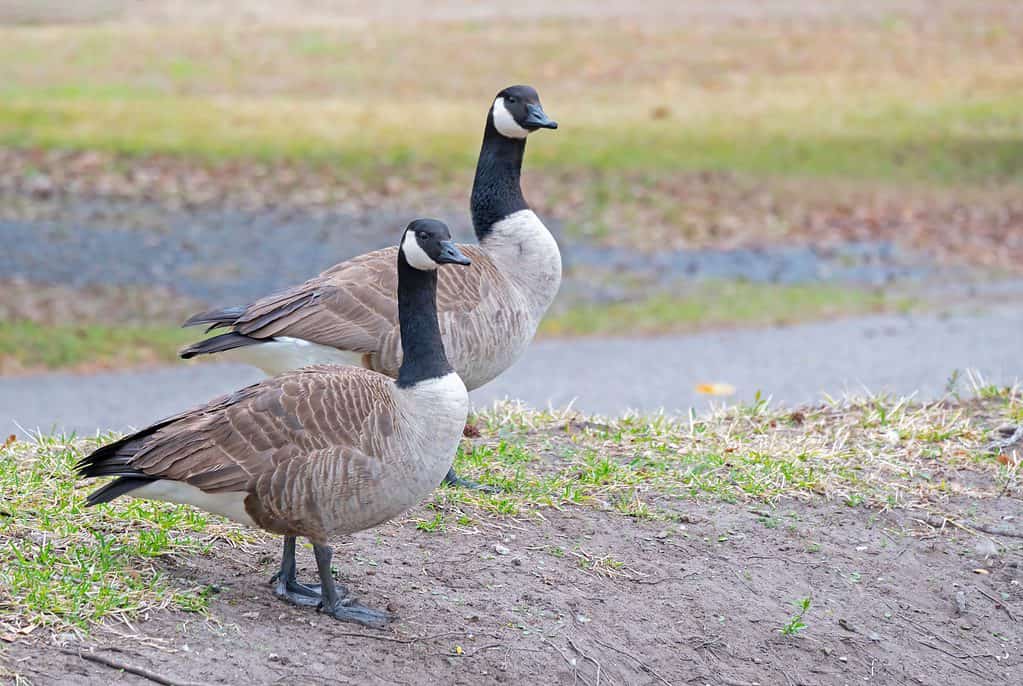
Geese have large webbed feet which they use to propel themselves through the water.
©Daniel Wright98/Shutterstock.com
Just like ducks, geese are commonly kept as ornamental pets and for the table. However, there are also many species of wild geese. There are two genera of geese — Anser (white geese and gray geese) and Branta (black geese). Geese have palmate webbed feet, meaning that their three front toes are webbed while their hind toe is not.
13. Grebes
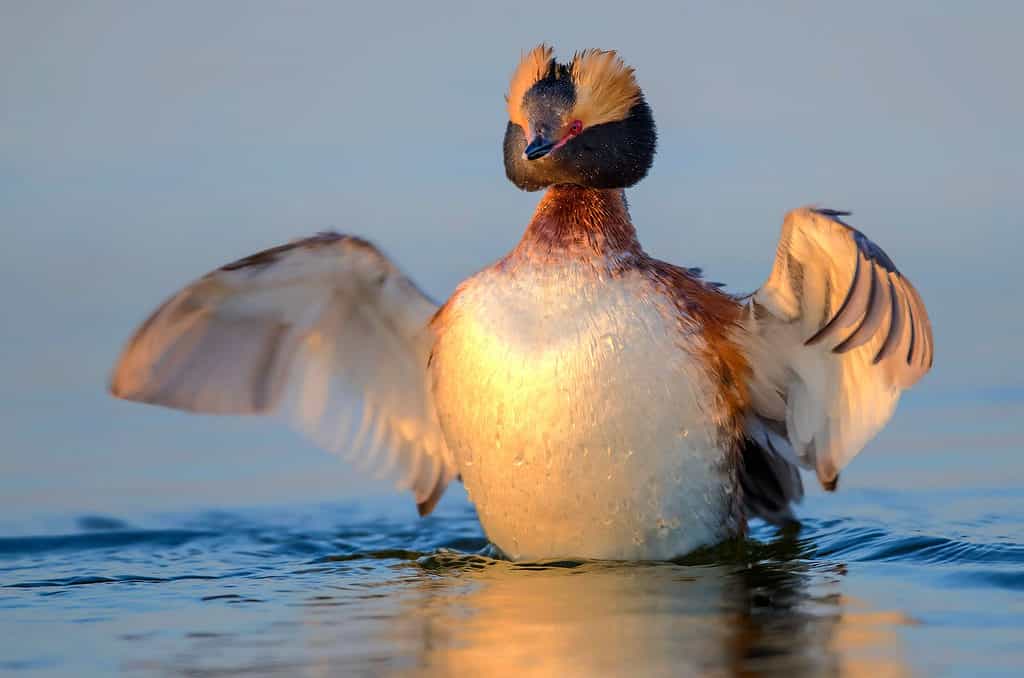
With lobed toes rather than fully webbed feet, grebes are extremely strong swimmers.
©1674722887/Shutterstock.com
Grebes are another bird with lobed toes rather than completely webbed feet. Grebes are widely distributed around the world and inhabit every continent except Antarctica. They live in both coastal and freshwater areas and typically nest close to the water’s edge. As diving birds, grebes are powerful swimmers and eat a variety of fish and aquatic invertebrates.
14. Guillemots
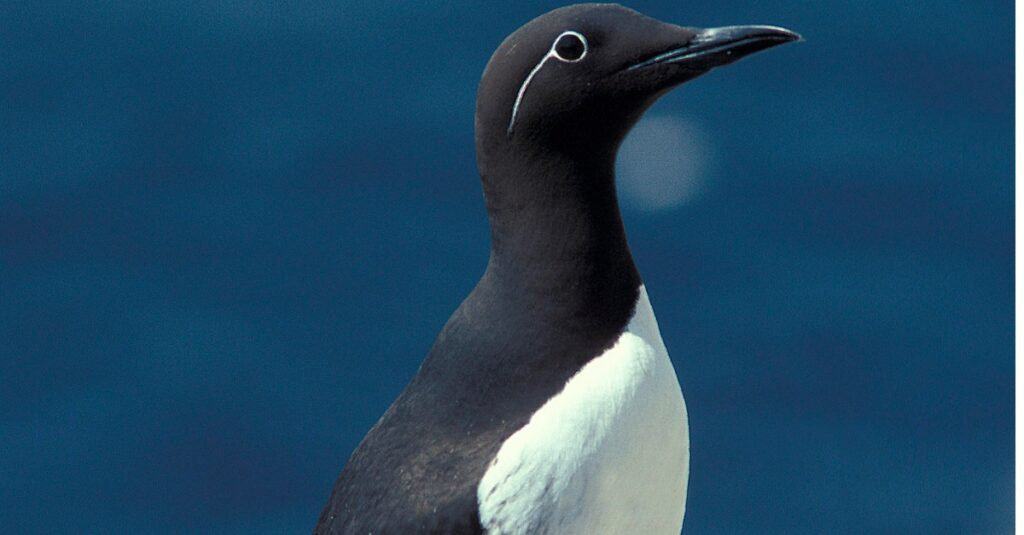
Guillemots have distinctive black and white plumage.
©iStock.com/slowmotiongli
The guillemot is a species of bird in the genera Uria and Cepphus. They are medium-sized birds and typically have black or brown plumage with white markings. Guillemots typically dive for their prey and again use their webbed feet to propel them while swimming underwater.
15. Gulls

Gulls are large birds with fully webbed feet.
©GummyBone/ via Getty Images
Also known as seagulls, gulls are medium to large-sized seabirds that are widely distributed around the world. There are approximately 50 species in total, and gulls can be found on every continent, usually around the coastlines. Although gulls have webbed feet and are strong swimmers, they are also highly capable of moving around on the land too.
16. Herons
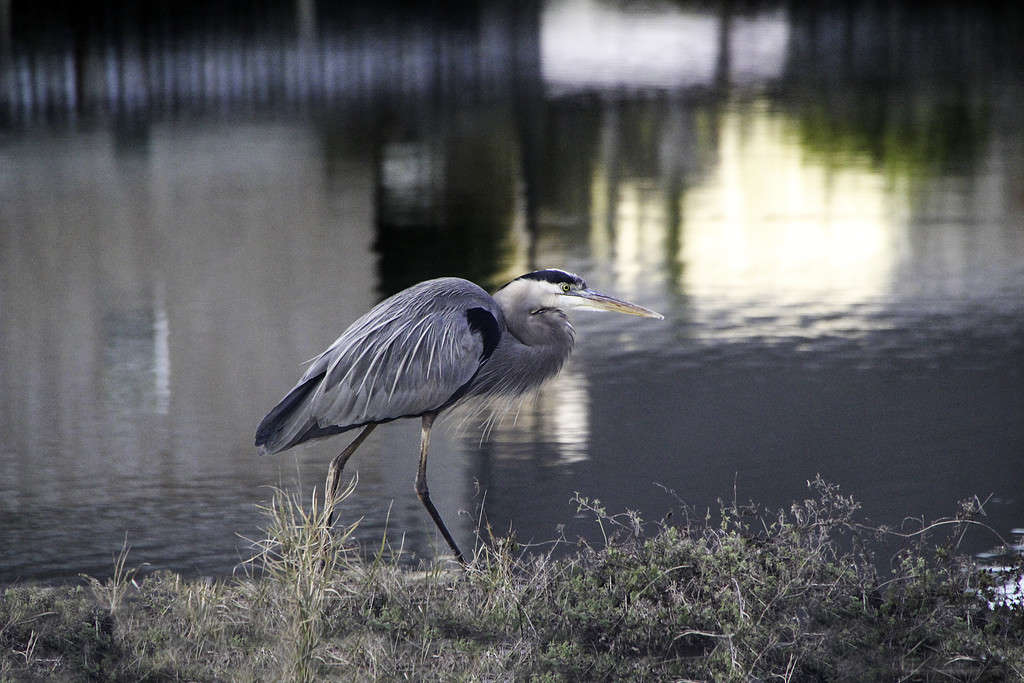
With their long legs and semi-webbed feet, herons are suited to their lifestyle as wading birds.
©Jill Meyer Millet/ via Getty Images
Herons are one of only a small group of birds to have semipalmate feet, which have only a small webbed section between the toes. Herons are members of the Ardeidae family and are characterized by their long necks and long legs. They are widely distributed and inhabit areas around virtually any wetland habitat.
17. Loons
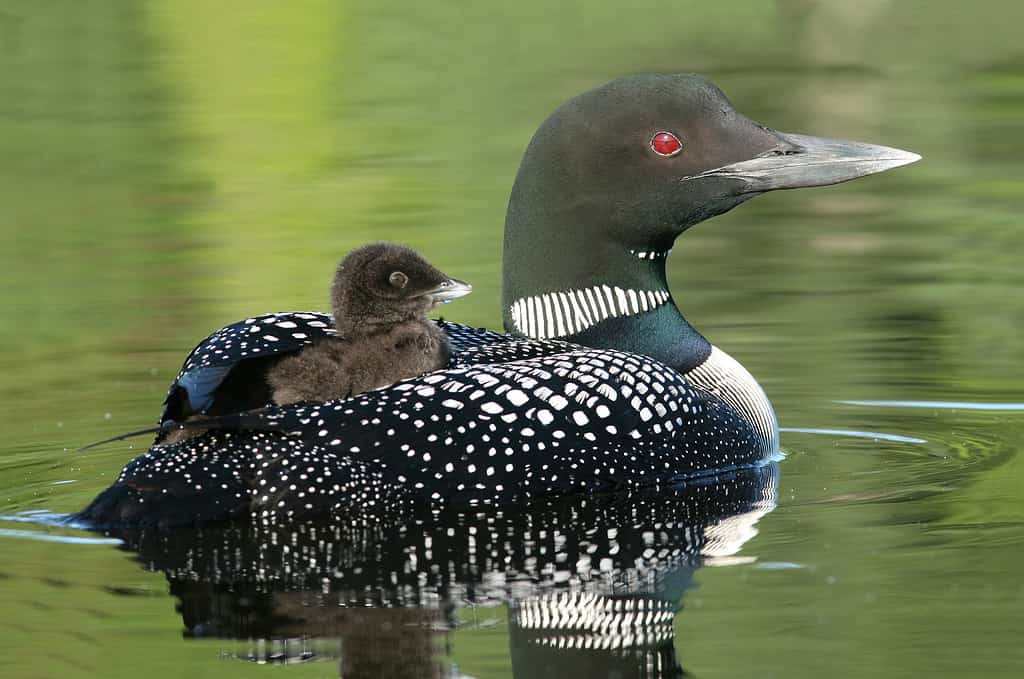
Loons spend much of their lives on the water.
©BRIAN LASENBY/iStock via Getty Images
There are five species of loon, and they are members of the Gavia genus. Loons closely resemble ducks but have large, fully webbed feet. Loons are distributed across North America, Europe, and Asia, where they typically inhabit lakes and ponds. They spend the majority of their lives on the water, only coming ashore during the breeding season. One of the reasons for this is because their feet are located far back underneath their bodies, making it difficult for them to walk on land.
18. Murrelets

Murrelets have webbed feet but nest in trees.
©John Yunker/Shutterstock.com
Another group of seabirds are the murrelets, which are members of the Brachyramphus genus. Murrelets have small webbed feet and live in the coastal regions of the North Pacific, although they sometimes migrate to Japan. However, they are unusual in that they typically nest in trees in forests and on mountains.
19. Pelicans
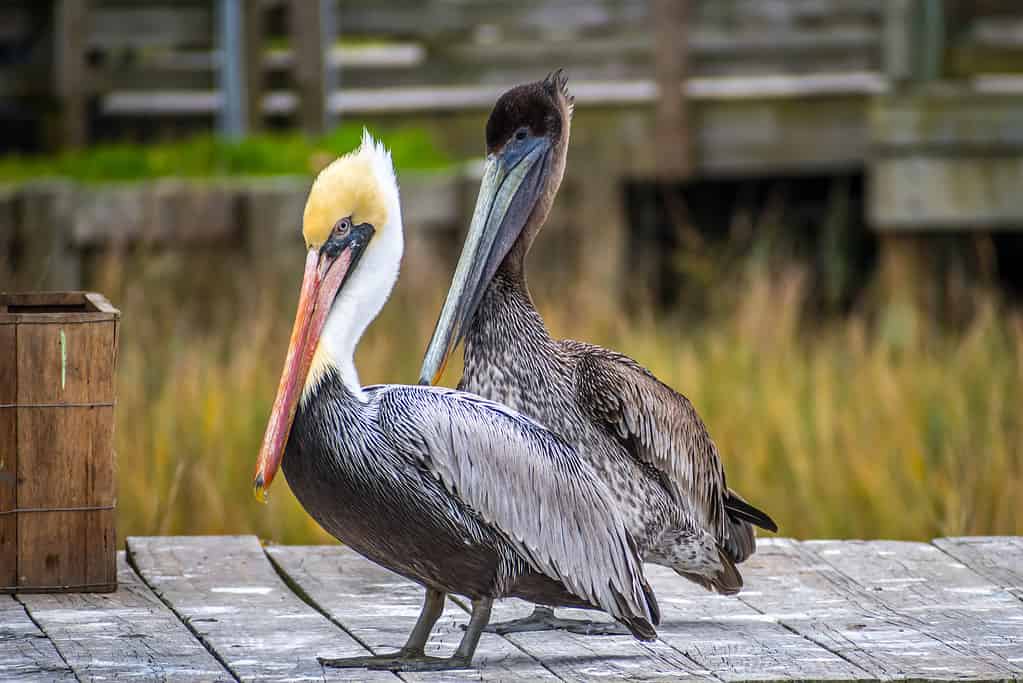
Pelicans have large webbed feet and a long beak.
©Cheri Alguire/iStock via Getty Images
Some of the most distinctive birds are pelicans, which have a large throat pouch and a long beak. They are large birds, with the largest species having a wingspan of more than nine feet. Pelicans have fully webbed feet which make them strong swimmers, although not as able on land. Pelicans are widely distributed, inhabiting every continent except Antarctica, and they live in both coastal and freshwater areas.
20. Penguins

Penguins have powerful feet which are perfectly suited to their aquatic lifestyle.
©Gerald Corsi/ via Getty Images
The iconic penguin is the bird that is the most well-adapted for its aquatic lifestyle. These flightless birds have webbed feet and wings which have evolved into flippers. However, despite their feet being webbed, penguins are still able to walk long distances. They also use their strong feet as rudders to help steer their bodies while they are swimming.
21. Petrels
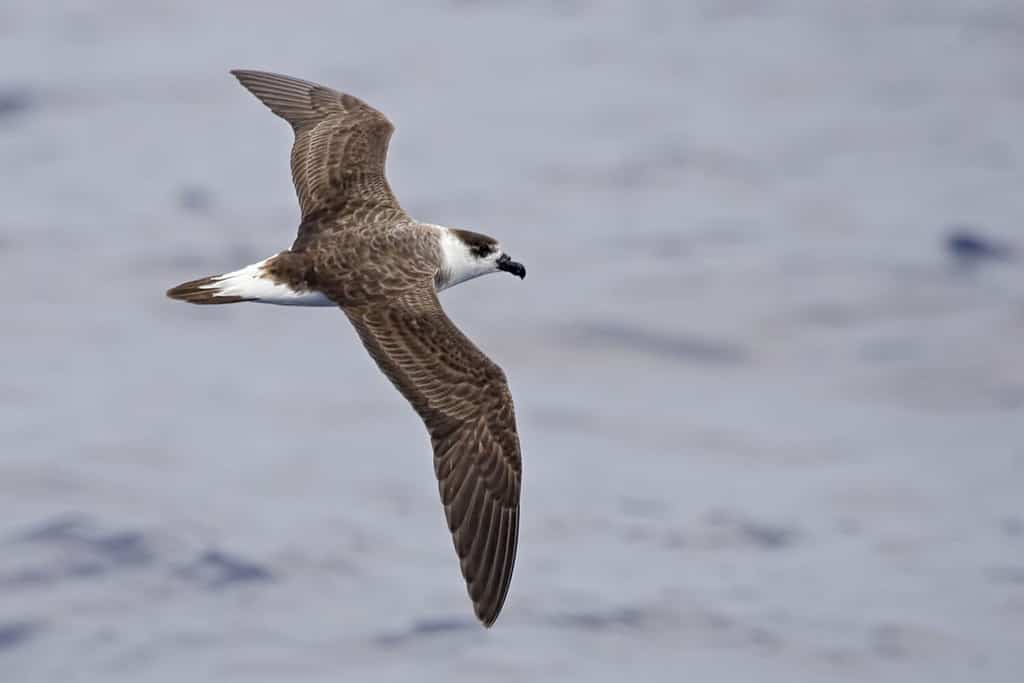
Petrels often look as though they are running on water.
©Harold Stiver/Shutterstock.com
Another group of pelagic birds with webbed feet are petrels. Storm petrels are one of the best-known species and have the unique ability of being able to look as though they are running on the surface of the water. This is because they fly low over the water as they are searching for food, tapping their feet down as they go.
22. Plovers

Plovers have semipalmated webbed feet.
©Dee Carpenter Originals/Shutterstock.com
Next are plovers which are wading birds. There are approximately 45 species of plover, and they inhabit a variety of wetlands and coastal regions around the world. Plovers are fairly small birds and feed mainly on small prey such as small fish, worms, insects, and crustaceans.
23. Puffins
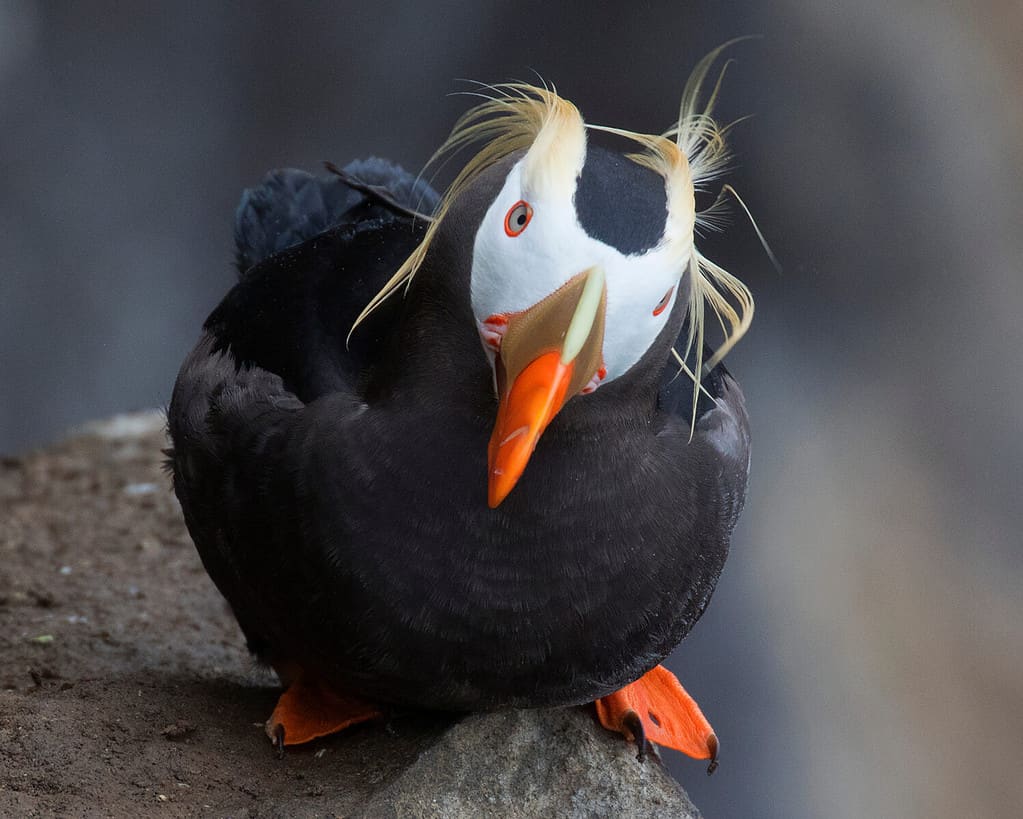
Puffins have webbed feet which help them to survive out at sea.
©rbrown10/Shutterstock.com
Another iconic seabird is the puffin, which has a black-and-white appearance and a stocky body. There are three species of puffin, and they inhabit the coastal areas around the North Atlantic and the North Pacific. Puffins are pelagic, and their webbed feet help them to survive long months at sea. However, they come ashore to breed in large colonies on islands and coastal areas.
24. Sandpipers
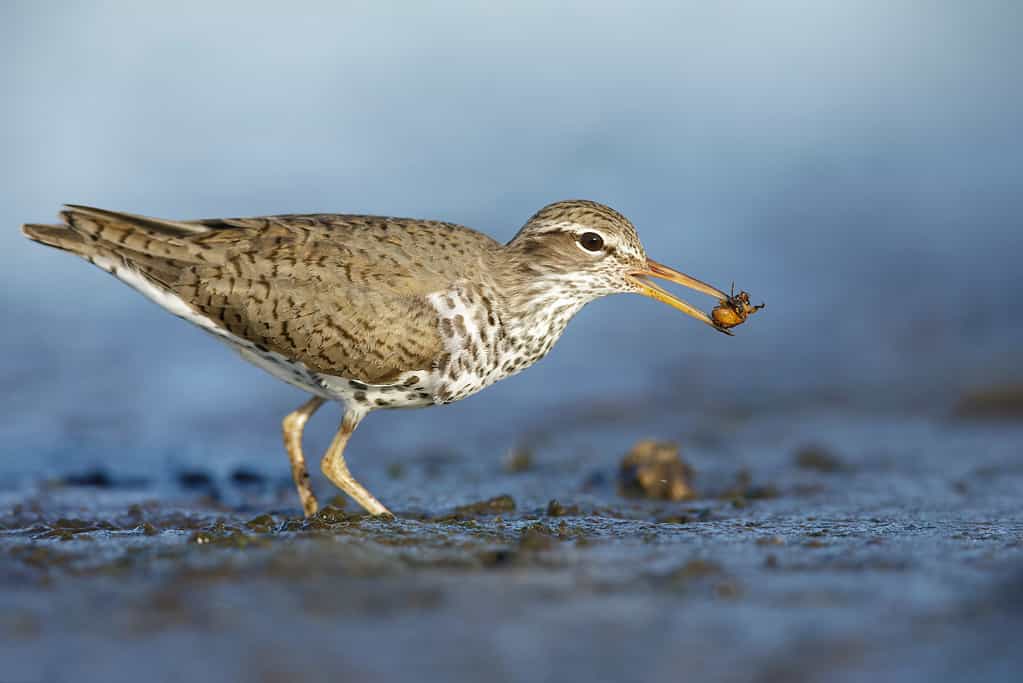
The sandpiper is a wading bird with partly webbed feet.
©Agami Photo Agency/Shutterstock.com
Sandpipers are wading birds which have semipalmate feet. Instead of being fully webbed, semipalmate feet have only a small section of webbing between three toes. There are approximately 98 species of them, making up the Scolopacidae family. They live around a variety of aquatic habitats and nest in depressions on the ground.
25. Skimmer
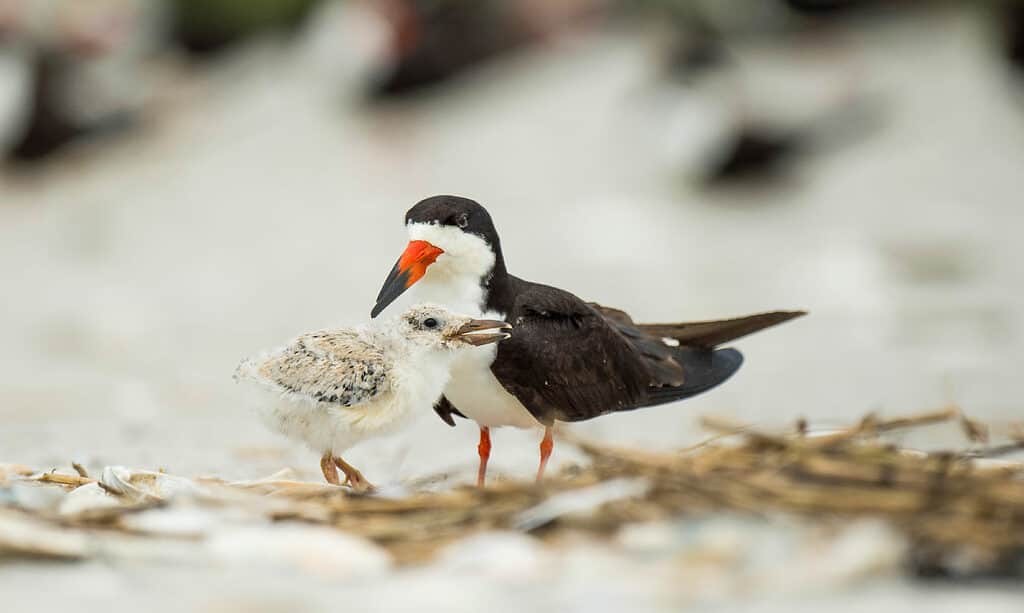
Skimmers are small water birds that hunt by flying low over the water.
©Ray Hennessy/Shutterstock.com
There are three species of skimmer, and they inhabit Africa, Asia, and the Americas. Skimmers are characterized by their uneven bill size, of which the lower section is larger than the upper section. This allows them to fly low over the surface of the water and scoop up small fish as they go.
26. Skuas
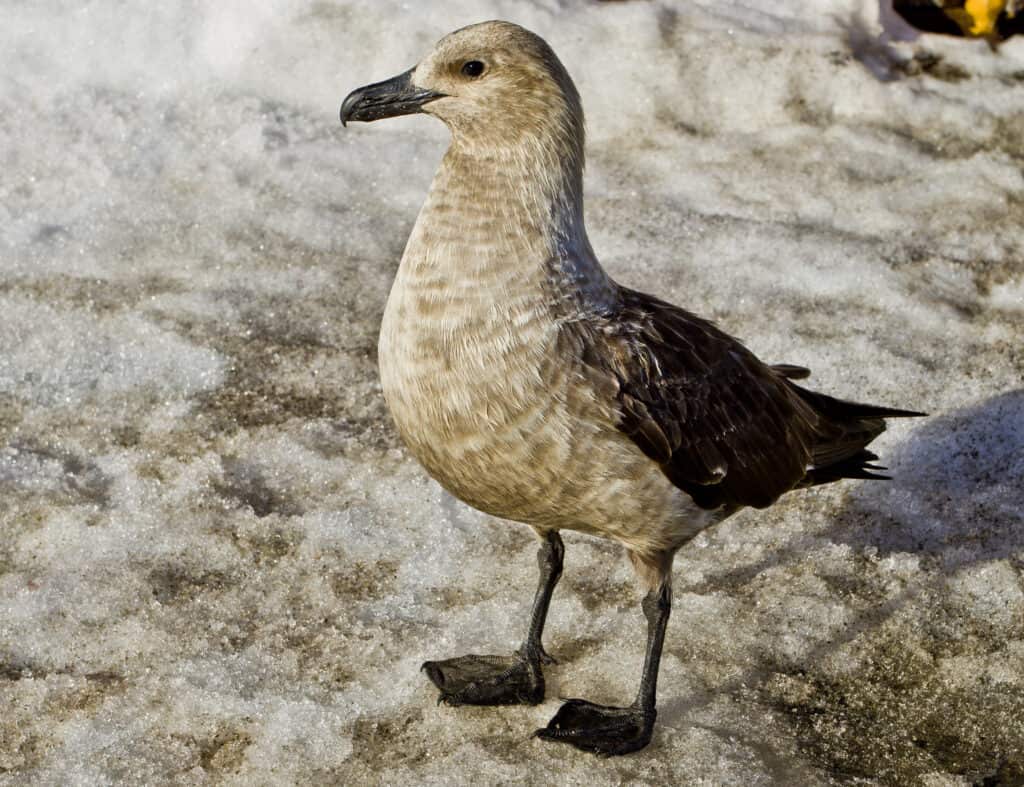
Most skuas have webbed feet and sharp claws.
©Sergey 402/Shutterstock.com
Skuas are any of seven species of seabirds within the Stercorarius genus. They are widespread across the world, even inhabiting both the Arctic and Antarctic regions. They are medium-sized birds, averaging 22 inches long, and have webbed feet as well as particularly sharp claws.
27. Spoonbills
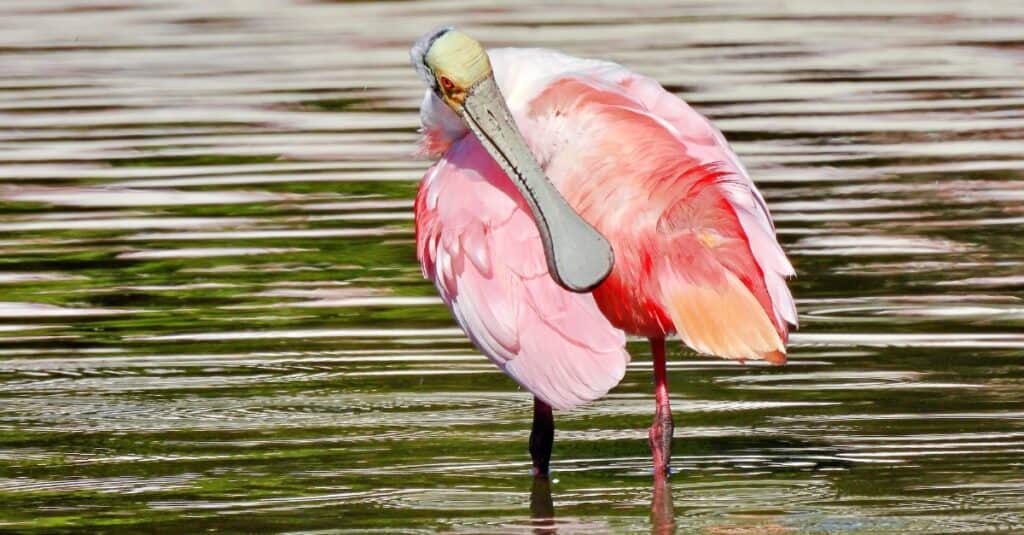
The spoonbills are wading birds with semi-webbed feet.
©iStock.com/passion4nature
Spoonbills are another wading bird with a wide distribution. There are six species, all of which have long legs and semi-webbed feet. They live in both freshwater and saltwater regions and eat a variety of small fish, insects, and crustaceans.
28. Swans
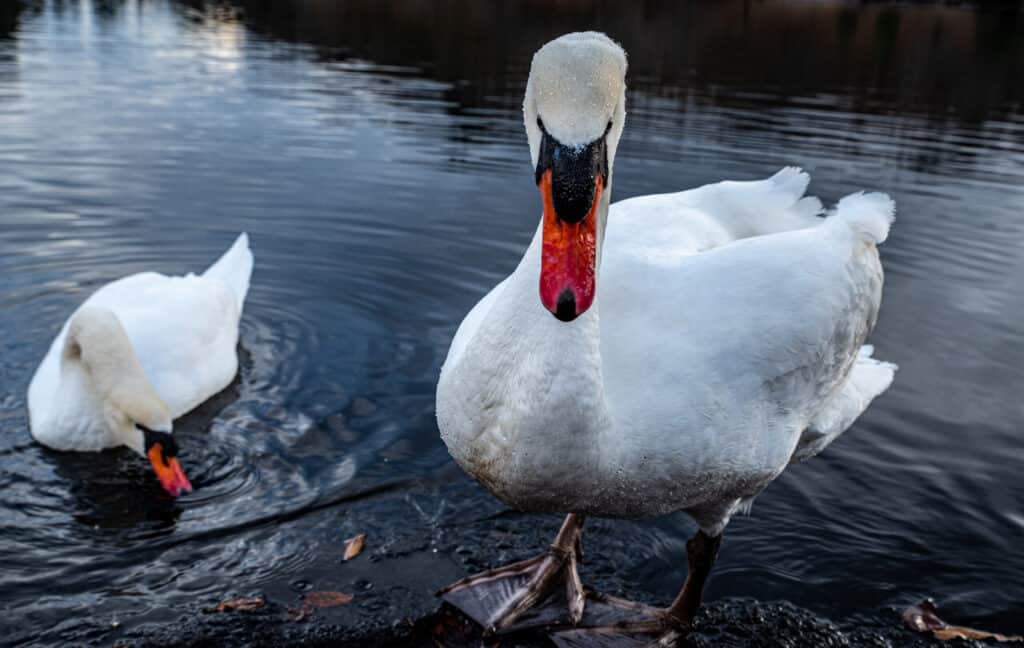
Swans have fully webbed feet, making them powerful swimmers.
©TETSU Snowdrop/Shutterstock.com
Some of the most majestic birds on the list are undoubtedly swans, which are characterized by their long necks and tendency to mate for life. There are seven species, all of which are in the Cygnus genus. Swans are some of the largest waterbirds in the world, and the largest species is the trumpeter swan which can be six feet long and have a wingspan of up to ten feet.
29. Terns
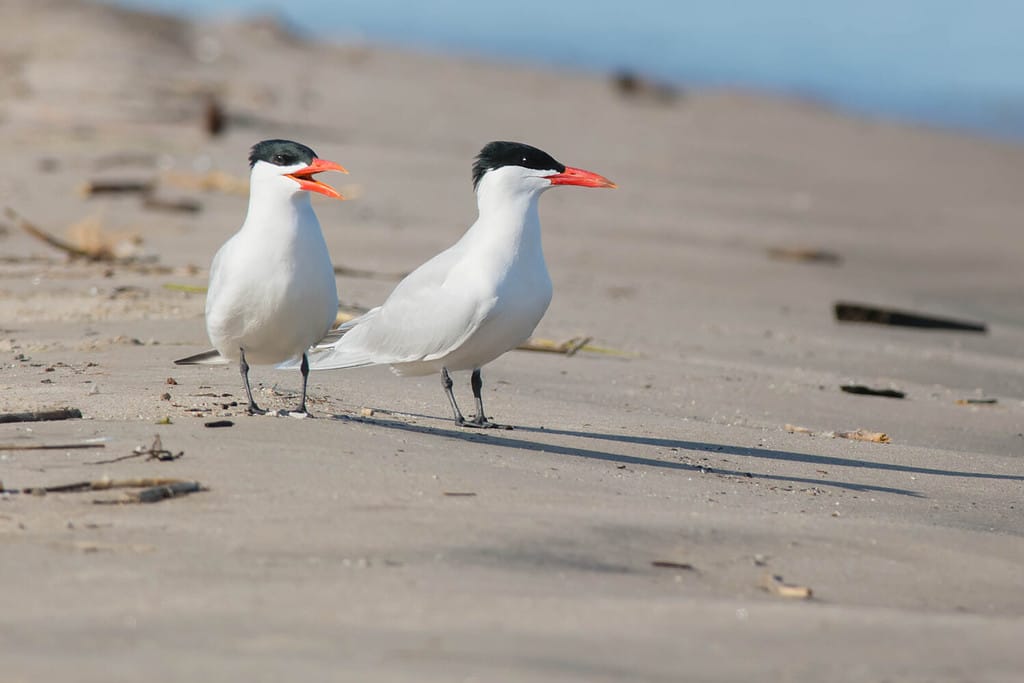
Although terns have webbed feet they spend most of their lives on land.
©Paul Reeves Photography/Shutterstock.com
The next birds on the list are terns, which are seabirds in the same family group as gulls. There are approximately 40 species of tern, and they are distributed across every continent. They typically inhabit coastlines or islands, although some species prefer areas around marshes. Although terns have webbed feet, their feet are small and they don’t actually use them for swimming much. Instead, they only spend enough time on the water to catch their food, preferring to spend the majority of their lives on the land.
30. Tropicbirds
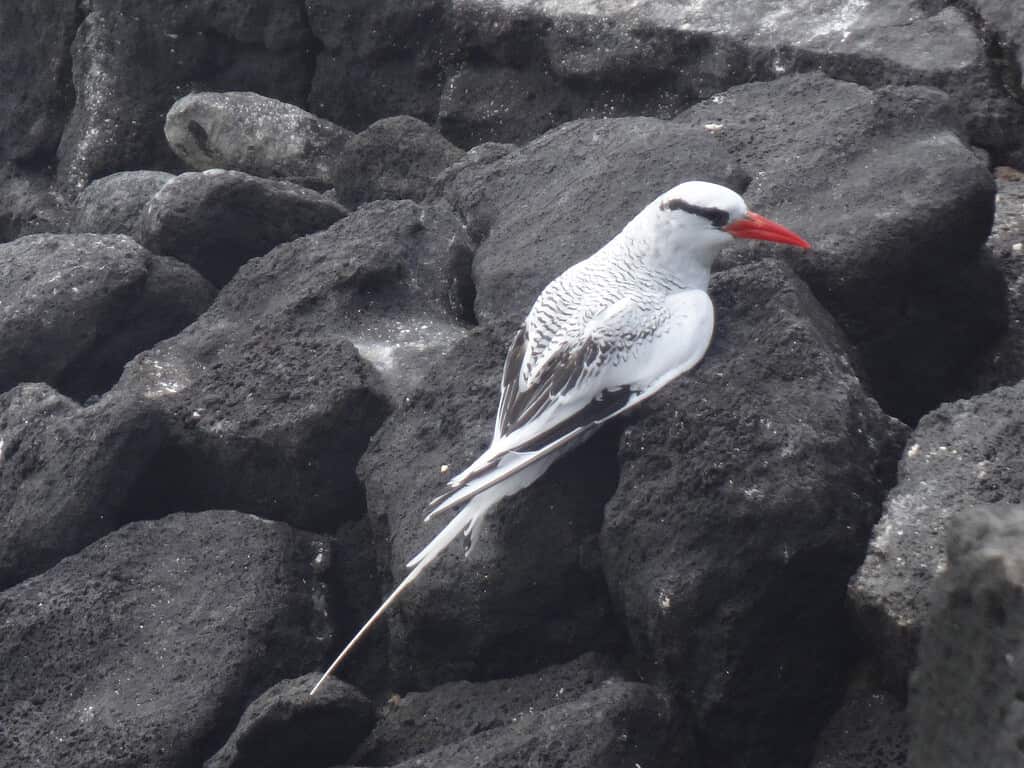
Tropicbirds only have small webbed feet.
©Lisa Seeto/iStock via Getty Images
The final birds are tropicbirds which have fully webbed feet. There are three species of these birds, and they can be identified by their long tail feathers and relatively small feet. They also typically have white feathers with black markings on their faces and bodies. Tropicbirds nest close to shore, often in holes in the ground. They prey on fish and squid, which they catch by diving down into the water.
The photo featured at the top of this post is © Wirestock/iStock via Getty Images
Thank you for reading! Have some feedback for us? Contact the AZ Animals editorial team.






